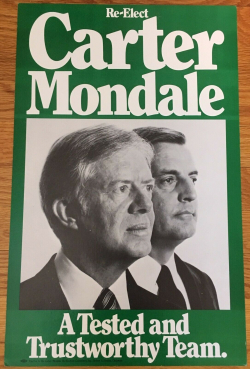 If all you know of me is this weekly blog, you may not know I’ve made my living for over 40 years as a business reporter.
If all you know of me is this weekly blog, you may not know I’ve made my living for over 40 years as a business reporter.
Even when technology was my focus, from 1983 until 2009, it was always from the point of view of business. My most profitable periods were from 1997-2000, when I covered Internet commerce, and from 2005-2009, when I covered open source and health IT.
These days I make my money from InvestorPlace. It’s a great gig, if a little straitjacketed. They want single-company stories, and they want me to say whether you should buy or sell. I’ve seemed to be a genius, because the market has been rising these last few years. I assure you I’m not.
With all that as background, let me talk about the biggest transformation I’ve seen in my career, which has occurred in retailing.
In my youth retailing was simple. Retailers would buy branded merchandise in bulk, break bulk in their stores, then offer it all up for sale at a mark-up of nearly 100%. My first credit card came from Sears.
Early in my career this shifted with Walmart and “category killers” like Staples, Petco and Sports Authority. But it was still the same game. Companies would buy huge lots of merchandise, break bulk in bigger stores and take smaller markups. Even Costco is like this. The only difference is that they define bulk differently.
 What we first called “e-commerce” is, when done right, completely different. Instead of breaking bulk in a store, where stuff can walk away, Amazon breaks bulk in a warehouse. The cost of finding, picking, packing and shipping to the customer’s door, using computers, turns out to be about the same as that of renting stores, shipping goods in bulk, employing people to sell them, processing the transactions, and theft.
What we first called “e-commerce” is, when done right, completely different. Instead of breaking bulk in a store, where stuff can walk away, Amazon breaks bulk in a warehouse. The cost of finding, picking, packing and shipping to the customer’s door, using computers, turns out to be about the same as that of renting stores, shipping goods in bulk, employing people to sell them, processing the transactions, and theft.
This doesn’t work well with fresh groceries. One solution was the “meal kit,” which could be made at a warehouse and either shipped directly or bought in a store. Again, bulk was broken in the warehouse, but to a greater degree. The directions for preparing the meal were added to the box. But this was shown quickly to be less an e-commerce innovation than a retail one, a pretty short-lived one.
 Kroger has tried to break bulk in warehouses, using a British company called Ocado. This works well in England, where you can get from a warehouse to anyone’s home within a few hours. It doesn’t work as well in the U.S., where the distances are greater.
Kroger has tried to break bulk in warehouses, using a British company called Ocado. This works well in England, where you can get from a warehouse to anyone’s home within a few hours. It doesn’t work as well in the U.S., where the distances are greater.
Kroger would have done better with its old model, quickly adapted by Walmart, of connecting stores to the Web site and breaking bulk in the stores for a scheduled pick-up. My problem is that there are no savings in this model for the store. You’re still renting the space, hiring people to break bulk, and managing small transactions. In fact, the store loses the opportunity sale of someone coming in, browsing the aisles, and maybe picking up a few other things along the way.
No. The most revolutionary change to retailing has been merchants using database technology to capture both sides of the cost equation.
They design and make their own stuff, and only sell in their own stores. This gives them the manufacturer’s mark-up, the full retail mark-up, and control over the merchandise. They decide how much of something to make and keep anyone else from selling it at off-price.
In other words, Lululemon.
 When Lululemon started a lot of people thought its success was based on the taste of founder Chip Wilson. When he got caught in a scandal, they brought in a guy named Laurent Potdevin, and it kept growing. Then he got caught in scandal, so they brought in a third guy, and it’s still growing. Lululemon is now worth more than Macy’s, JC Penney, and Under Armour combined. Check that, it’s worth twice that, $31,000,000,000.
When Lululemon started a lot of people thought its success was based on the taste of founder Chip Wilson. When he got caught in a scandal, they brought in a guy named Laurent Potdevin, and it kept growing. Then he got caught in scandal, so they brought in a third guy, and it’s still growing. Lululemon is now worth more than Macy’s, JC Penney, and Under Armour combined. Check that, it’s worth twice that, $31,000,000,000.
Want to know how Target became a monster over the last few years? The same way. They created quality store brands, like Cat & Jack kids’ clothes. Now people go to their store specifically for that merchandise. Nike now sells one-quarter of its sneakers directly, either online or at its own stores.
The key is quality. You can’t put out something that’s almost as good, or just as good. That’s how older store brands worked. To have your name on it, it must be better. This costs big money. But it must be done if a store is to become a destination.
Want some stock tips? That’s what I’m always asked for, stock tips. OK. Here are two stock tips.
 First, Bed, Bath & Beyond, BBBY on the NASDAQ. They hired Target’s chief merchandising guy, an Aussie named Mark Tritton, as CEO. Then they did a sale-and-leaseback on the stores to give him a $250 million war chest, and blew out their C-suite, giving him free rein. After pre-announcing a bad Christmas (the new guy just arrived in November) the stock tanked. You’re getting in on the ground floor.
First, Bed, Bath & Beyond, BBBY on the NASDAQ. They hired Target’s chief merchandising guy, an Aussie named Mark Tritton, as CEO. Then they did a sale-and-leaseback on the stores to give him a $250 million war chest, and blew out their C-suite, giving him free rein. After pre-announcing a bad Christmas (the new guy just arrived in November) the stock tanked. You’re getting in on the ground floor.
Here’s another. Kohl’s. This is traded as KSS on the New York Stock Exchange. Michelle Gass, hired from Starbucks in 2014, looked like she was going great until recently. (The shares traded as high as $77 in late 2018 and are now in the mid-40s.)
The reinvention began last year when she made a deal to handle Amazon returns, and now her own bad Christmas is getting laughed at. But that’s just the first step. Gass has leased out parts of some stores to Planet Fitness. She’s re-building around exclusives, home furnishings from some TV house flippers, makeovers like those of wildly-profitable Ulta Beauty (ULTA on the NASDAQ) fashions from Dolce & Gabbana, even Polo Ralph Lauren. Suddenly that deal she made to bring in Under Armour a few years ago starts to make sense.
There are no guarantees. The Bed, Bath guy from Beyond might be a freak. The guy McDonald’s hired five years ago turned out to be one, but he also increased the stock’s value by over 200%. The Kohl’s stuff may fail, too. It’s tough to turn TJ Maxx into Bloomingdale’s
But that’s what playing retail is about. Look for a strategy that captures a manufacturer’s margins, as well as a retailer’s.









